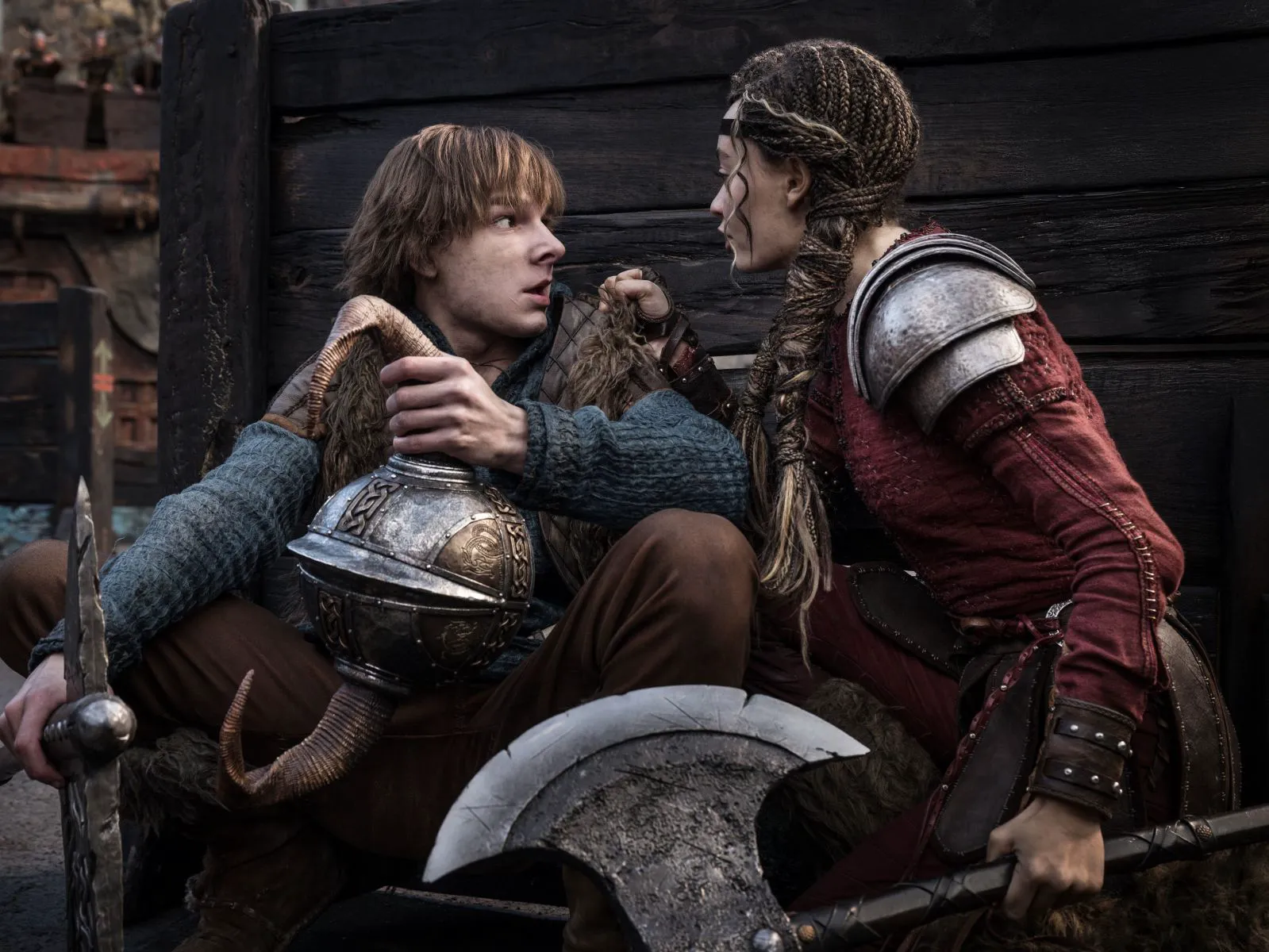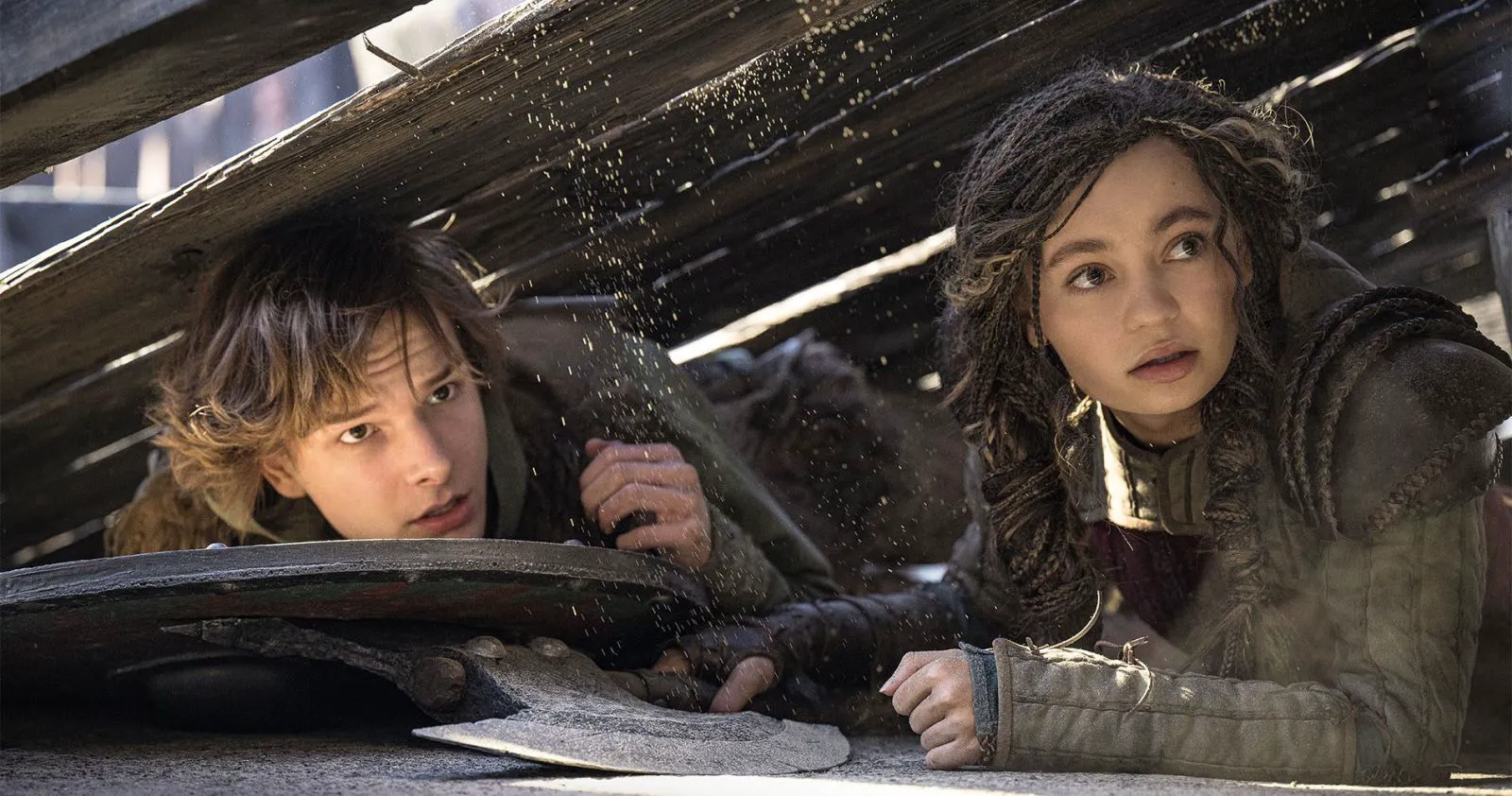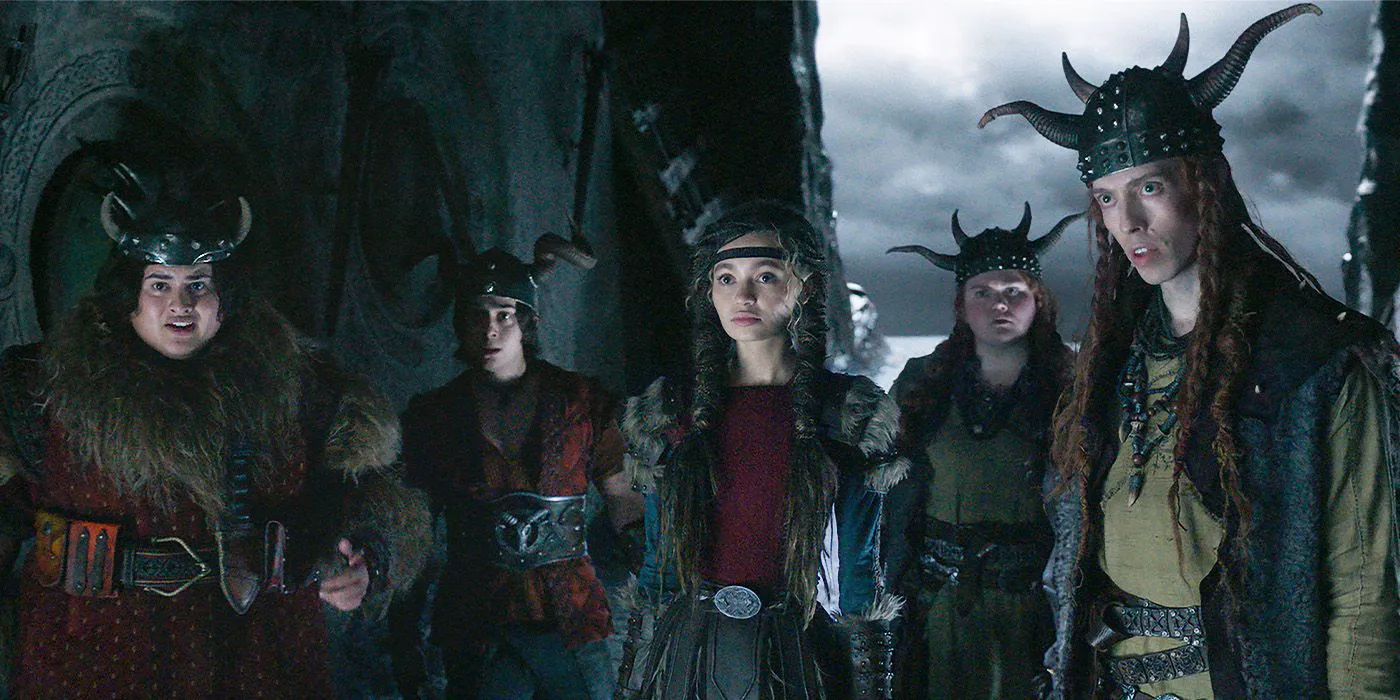Having barely caught our breath from the updated version of the legendary “Lilo & Stitch,” another beloved animated film from the early 21st century has been remade. This time, Disney’s rivals, DreamWorks Animation, are looking to cash in on audience nostalgia. Some see the return of Toothless to the screen as a welcome trip down memory lane, while others view it as a worrying sign of Hollywood’s increasingly narrow creative horizons. Just 15 years after the original’s release, the company has dared to recreate the story of the iconic friendship between a Viking boy and an adorable dragon almost shot-for-shot. Is it foolishness or a secret to success?

Mason Thames as Hiccup in “How to Train Your Dragon”
A Faithful, Yet Familiar, Flight
Dean DeBlois, the director of the original animated trilogy, helmed the remake, ensuring maximum accuracy and fidelity to the source material. The remake closely follows the first film, adhering to the same script, sequence of events, and even specific scenes. On one hand, this is the project’s main strength: the new film feels like a respectful homage to fans. On the other hand, this faithfulness is also its main problem – the film doesn’t offer a fresh perspective on the story, doesn’t add depth to the characters, and doesn’t add anything besides photorealism. This isn’t an adaptation or a reinterpretation, but essentially a copy, albeit one made with expensive special effects (thanks to Framestore, the studio responsible for the visual spectacle of “Harry Potter”).
The Timeless Tale of Hiccup and Toothless
The plot still revolves around the conflict between the teenager Hiccup (Mason Thames) and the harsh, demanding world of adults. The inhabitants of the Isle of Berk are accustomed to considering dragons as enemies, and the entire Viking culture revolves around their extermination. But Hiccup is not a warrior. He is sensitive, awkward, observant, and forgiving. When the hero manages to shoot down a dragon for the first time, he is unable to finish off the frightened creature. This act becomes the starting point for the rest of the story – the friendship with the Night Fury named Toothless not only changes the hero’s life but also turns the Vikings’ familiar world upside down.

Nico Parker as Astrid Hofferson in “How to Train Your Dragon”
Visual Spectacle, But Lacking Innovation
After the success of “Game of Thrones” and “House of the Dragon,” there is no doubt that the image of riders in the sky on giant reptiles has become part of the visual mainstream. What was once awe-inspiring in 2010, during our first encounter with not only Toothless but also “Avatar” – 3D flights with frighteningly realistic air currents and rotations between rocks – is now perceived differently. Of course, the film’s visual level is incredibly high: Northern Ireland provided the film with natural, picturesque landscapes with dense forests, rocky cliffs, cozy plains, and coastal ridges. The sets are grand and convincing, and the effects, especially in the scenes with dragons, are executed at the highest level. It’s all incredibly beautiful, but it’s no longer in the realm of “the impossible has finally become real.”

Nico Parker as Astrid Hofferson in “How to Train Your Dragon”
Minor Tweaks, Major Length
Formally, the new version does have a couple of changes. There are more residents in the village (now the island has become a place where dragon slayers from all over the world gather), women appear more often in the foreground, and Astrid (Nico Parker) has not only Afro braids but also a couple of sharp remarks about social inequality. The changes also touched on very minor details, more likely causing a Mandela effect: for example, during their first meeting, Toothless takes Astrid not to the top of a tree, but to a coastal cliff, and in the finale, the dragon has a different muzzle shape. However, these elements remain more like signs of the times and optional touches than a thoughtful attempt to rebuild the story. It is all the more surprising that the film turned out to be noticeably longer than the original – by almost half an hour. The runtime is gained through micro-expansions: slightly more detailed dialogues, a light backstory for secondary characters, and extended flight scenes. It sounds tempting, but in reality, the effect is “neither here nor there”: there are not enough innovations for a rebuild, and they are excessive for the usual dynamics.
A Safe Bet or Creative Stagnation?
DreamWorks’ decision to follow the letter of the original feels partly like an ironic jab at an audience tired of Disney adaptations. Don’t like the new “Little Mermaid” or “Snow White”? Here’s a copy – the film is a little longer, but otherwise devoid of changes, which means no risk. The move proved effective: many viewers were indeed enthusiastic about the return of Toothless, so it is almost certainly worth waiting for remakes of the remaining two parts.
“How to Train Your Dragon” is still a kind and bright story about acceptance and inner freedom, about friendship and the courage to be yourself. The touching intonation in the relationship between Hiccup and Toothless has been preserved: where adults see an enemy, a child finds a friend. The idea of acceptance and forgiveness is universal, which is worth reminding a new generation. But was it worth taking the path of least resistance and treading a familiar path?